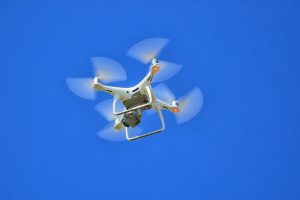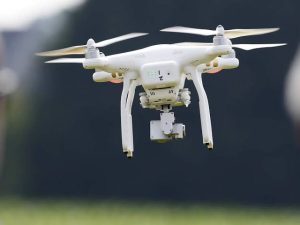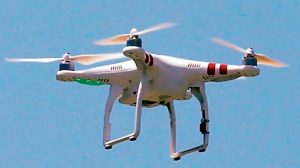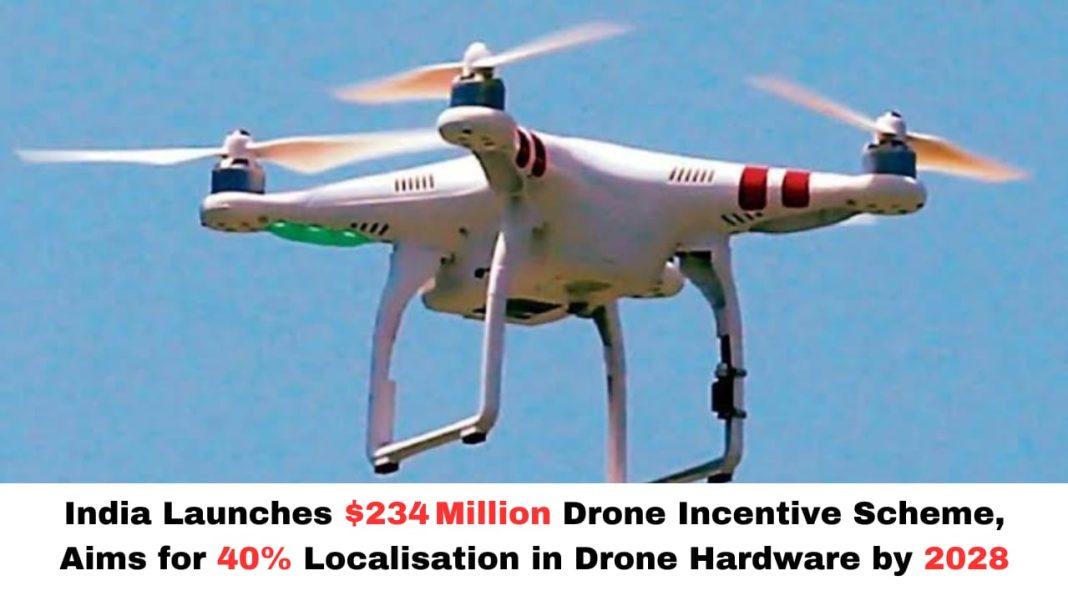Digital News Guru Technology Desk:
India’s Rs 1,998 crore ($234 million) Drone Incentive Scheme
In a decisive move to cement its stature in unmanned aerial technology, the Indian government has unveiled a Rs 1,998‑crore (≈US $234 million) incentive scheme aimed at boosting domestic drone production for civil, commercial, and military applications over the next three years.
The Catalyst: May’s Drone-Driven Border Clashes
The announcement follows a dramatic four‑day drone conflict along India’s borders in early May—the first large‑scale drone engagement between India and Pakistan. Both sides deployed UAVs, loitering munitions, and kamikaze drones to strike across hostile lines. These events laid bare India’s dependencies on foreign drone systems and components, particularly from Israel, China, and Turkey. Defence Secretary Rajesh Kumar Singh emphasized the imperative of indigenous production, stating that the conflict demonstrated “a lot of use of drones… the lesson… is that we need to double down on our indigenisation efforts”.

Scheme Overview: More Than Just Drones
The incentive framework encompasses:
- Complete drones: Civilian and military platforms.
- Crucial components: Motors, sensors, optics, software systems.
- Anti-drone technology: Advanced counter-UAV systems.
- Drone-focused services: Including command-and-control, maintenance, and R&D.
Spanning three years, this scheme dwarfs its predecessor—a PLI (Production Linked Incentive) launched in 2021 worth Rs 120 crore (~US $14 million). That initial scheme offered 20% PLI and produced a modest outcomes due to limited interest and capital constraints.
Ambitious Localisation Goals
A highlight of the policy is its localisation target: achieving at least 40% domestic production of key drone components by FY 2028 (April 2027–March 2028). To support this, the government plans additional incentives for manufacturers who source components locally, along with favorable import regulations (broader bans on drone imports, but not components).
Financial Underpinnings: Beyond One-Time Grants
Backed by the Civil Aviation Ministry (with Defence Ministry collaboration), the scheme includes:
- Capital and operating subsidies via PLI.
- Zero-subsidy, low-interest loans from SIDBI (Small Industries Development Bank of India) to fund R&D, prototyping, and working capital.
The scheme forms part of India’s broader Rs 3,991 crore (~US $470 million) phased investment plan in drone systems over the next 12–24 months.
The Domestic Drone Ecosystem: At the Ready
India is already home to an ecosystem of over 600 drone and drone-tech firms, spanning startups, MSMEs, and larger system integrators . Notable regional innovation hubs include Tamil Nadu, which plays a leading role in defence-grade UAVs through firms like Garuda Aerospace, Zuppa, Dhaksha, and Big Bang Boom. These firms are innovating in areas such as autopilots, loitering munitions, and anti-drone systems—a clear indicator of existing latent capacity.

Strategic & Economic Stakes
The scheme aligns with the broader Make in India and Atmanirbhar Bharat (“self-reliant India”) missions. It aims to:
- Curtail foreign dependence, especially on Israel (military UAVs) and China (critical components).
- Foster defence innovation, creating Indian alternatives in an emerging UAV arms race.
- Boost job creation, R&D, and exports in a sector valued globally at over US $11 billion by 2030.
- Strengthen national security, ensuring greater autonomy in surveillance, reconnaissance, and counter-drone defence.
Challenges & Realistic Expectations
Despite potential, several hurdles lie ahead:
- Supply chain maturation: High-end components like sensors, lenses, and microelectronics are still largely imported.
- Capital scarcity: Early-stage startups often struggle to scale without significant R&D investment.
- Complex certification processes: Military-grade deployment demands rigorous testing and validation.
- Global competition: Chinese, Israeli, and Turkish drone hardware is deeply entrenched.
Government support and testing infrastructure—such as the four upcoming UAV testing and certification centres near Chennai and Sriperumbudur—could mitigate some of these challenges.
A Look Ahead: What to Watch
Over the next 24 months, key indicators of success will include:
| Metric | Target/Outcome |
| Component localisation | ≥ 40% of value added by FY 2028 |
| Industry uptake | Growth in PLI participants and product launches |
| Export figures | Rising sales to global customers |
| Programme continuity | Policy extensions or expansions post‑2028 |

India’s drone initiative carries the potential to reshape national security infrastructure and spawn new commercial segments—from agriculture and logistics to disaster management and urban planning. Successful execution could see India leapfrog into the ranks of top-tier drone producers.
Final Word
With this Rs 1,998‑crore roadmap, India is committing serious weight behind its drones ambitions. It’s far more than a subsidy programme—it’s a strategic pivot, recognizing drones as instruments not just of commerce but of national deterrence and global influence. If seized well by policymakers, startups, and manufacturers, India could emerge as a formidable drone ecosystem in the decade ahead.
You May Also Read: “Ramayana: Part I” Teaser out, Ranbir as Rama, Yash as Ravana, A Grand Prelude to Diwali 2026








